The Commodore 65 – in addition to the internal competition from the Amiga – had to contend with the fact that it was developed in a world that was undergoing radical change. After literally slow beginnings as a better typewriter and desk calculator, the PC had really picked up speed and was also about to take over the market for home computers thanks to the bad buzzword „multimedia“.

Commodore 65
Upheaval in computer architecture
Of course, the key data of the C65 is impressive and at the time, the 65 was even superior to current PCs in some areas. Like the Amiga, it had custom chips to support the main processor. In the early 1990s, however, a computer with an 8-bit CPU was a real anachronism, and the era of complete computers, which were rather difficult to expand, was already coming to an end in the mid-1980s. It was only around 25 years later that the successors to the home computer, the single-board computers (Arduino, RaspberryPI, BBC Micro:bit) came onto the market. But what distinguishes a home computer from a PC?
The quasi-open, expandable architecture of IBM-compatible PCs was (and still is) both a blessing and a curse. On the one hand, the system could be flexibly customised to the user’s requirements; on the other hand, the software, at that time DOS and Windows, had to be able to cope with the many different types of hardware. The so-called „drivers“, which are still present in almost all operating systems today, were required. Hardware-oriented programming, as was normal for home computers, was therefore very rarely possible.
The main advantage of home computers and single-board computers is the homogeneity of the hardware. If a programmer always finds the same components on the computers, he can optimise his programs precisely for this hardware. He does not need slow drivers to „translate“ the commands for the existing hardware. In the past, he could even use unintended operations, the so-called „illegal OP codes“. This refers to undefined instructions in the processor or the custom chips. These could be partly unfinished instructions or functions, or the processor could execute something that was not intended at all using a character string. If you are lucky, this does not lead to a crash but fulfils some useful function.
The CPU in the C64, the MOS 6510 (an offshoot of the 6502) and the video chip „VIC II“ had a lot of these illegal opcodes, with which the programmers made the C64 do things that went far beyond the specifications of the computer. On a PC with its unmanageable variety of CPUs alone, such a thing is unimaginable.
There were (are) two different philosophies in the development of microprocessors. On the one hand, CISC, which stands for „Complex Instruction Set Computer“, and RISC, which refers to a reduced instruction set of the processor. RISC CPUs have an instruction set that usually means a low two-digit instruction turnover – that of CISC processors is usually more than ten times as large. The performance of the CPU stands and falls with the ability of the compiler (the compiler translates the high-level language into machine language) to optimally utilise the instruction set of the processor. In the past, compilers for Intel CPUs were unable to do this, meaning that much more sheer computing power was needed to outperform the much slower home computers.
Another handicap of the Intel 8080/8086 CPUs was that they had no pipeline and offered less performance per MHz due to the very complex instruction set. The complexity increased the chip area (die), so that fewer dies were placed on a wafer (large round carrier plate on which the circuits are mounted), making production more expensive. CISC processors are becoming increasingly complex, unless backward compatibility is curtailed and things like the A20 gateway or real mode are jettisoned in x86.
The advantages of CISC CPUs were the ease of developing programmes in a high-level language. You rarely had to go into the depths of the machine-oriented assembler. This made the programmes significantly more comprehensive and powerful for the user and reduced development costs.
A typical representative of the RISC faction was the 6502, on which the 4510 of the Commodore 65 was also based. Typical CISC computers had a heart made from an 8080 or Z80 CPU, whose grandchildren are still found in most computers with Windows or macOS. Today, RISC CPUs from ARM can be found in almost every mobile phone from Apple to Huawei and Samsung to ZTE.
Although a modern CPU is highly complex, it does not give the programmer access to unintended instructions. How could it? Today, the processor itself has firmware that mediates between the code and the chip – which is partly due to the sacred cow that is backward compatibility. In terms of hardware alone, current CPUs no longer have much in common with their forefathers – but they still have to be able to execute their code. This is why there are no longer any „real“ RISC or real CISC processors. Downward compatibility is achieved through the CPU firmware, which emulates the old functions.
In the case of the Commodore 65, we are talking about a 4510 CPU. This is essentially a 6502 CPU – the lower number in the first position of the processor designation does not indicate a lower performance. The series sequence for the 6502 CPUs was (very roughly speaking): 6xxx (PET, CBM, VC20, C64), 7xxx (264 series), 8xxx (C128), (for the 264 series) and 4xxx (C65). So don’t be surprised if the designations don’t make sense, because they really don’t. :-) The fastest 6502 offshoot was the (real) 16-bit CPU W65C816S (16-bit ALU and register, 24-bit address bus and 24 MHz clock frequency). The 65C816 appeared as early as 1983! Compared to it, the much newer 4510 CPU of the C65 looks like a bicycle compared to a superbike.
You should keep all this in mind if you want to correctly assess the possibilities of the C65. Most people only look at the MHz figures of the computers and draw the wrong conclusions.
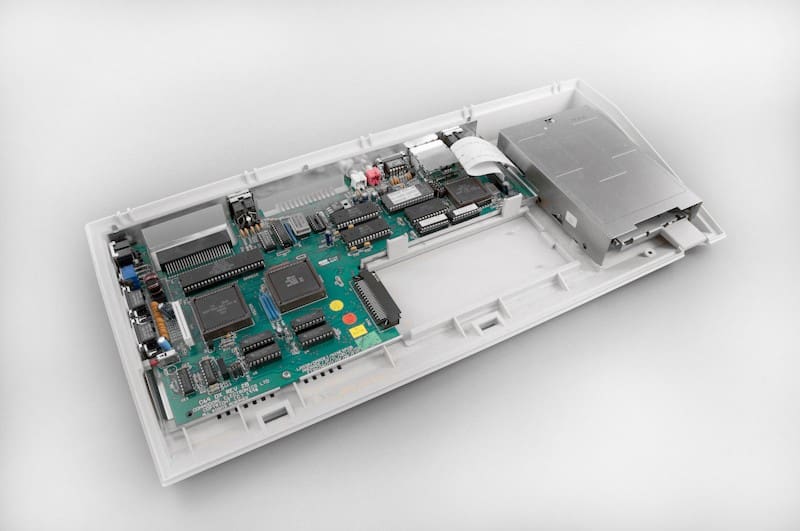
CPU:
The 4510 („Victor“) is a souped-up 6510, as used in the C64. This made it possible to use the above-mentioned illegal opcodes, which was very favourable for compatibility. The two – now integrated – input/output modules 6526 („CIA“) were also taken over from the C64. However, the actual processor core with 3.54 MHz came from the 65CE02 and also included the „mysterious“ 16-bit instructions of the C65.
There’s really no need to make a fuss about this, because 8-bitters have always had 16-bit functions, for example for subtraction and addition – as do the 8080 and Z80. So the 16-bit in a 65xx CSG CPU is really old hat. As an aside: The 6509 had a 20-bit address bus – nobody would think of calling it a 20-bit CPU for that reason. A real 16-bit CPU has a word width of 16 bits and an address bus that is at least 16 bits wide. Both attributes that the 4510 lacks – making it a flawless 8-bitter. At least as flawless as most 8-bit processors.
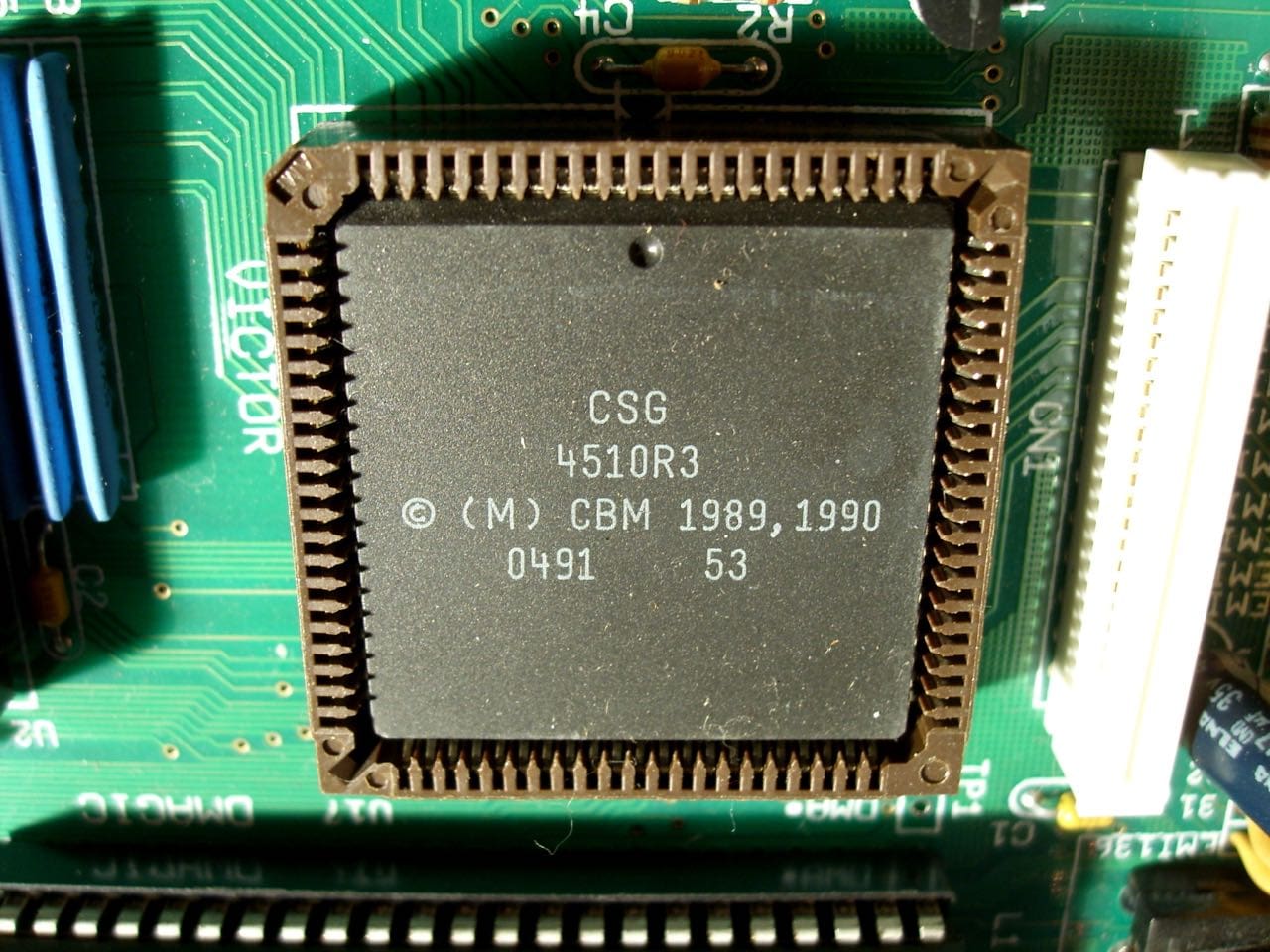
CPU 4510, aka „Victor
Why didn’t Commodore simply use the existing genuine 6502-16 bit? The 65C816 was developed by the company Western Design Centre. WDC was owned by Bill Mensch, a former employee of MOS – surely an agreement could have been reached. However, this processor would simply have limited the compatibility of the C65 – they had learnt something from the problems with the C128 and draped the old, illegal opcodes of the 6510 design around a new, inexpensive core with the 4510.
But enough grumbling. As I wrote in the other articles, the C65 was meant to please the still existing C64 fanbase. It was intended to be a faster and much more powerful C64. The lack of a numeric keypad on the keyboard already indicated its use as an entry-level home computer. Hence the internal designation as C64DX. Buyers could have kept all their peripherals and software. If they switched to the Amiga, they would have had to sell or dispose of everything. If you’re switching anyway, why not switch to an Atari ST or a PC clone? The C65 would have created customer loyalty.
The pure computing power of the 4510 processor was already about 3.5 times that of the C64 due to the clock frequency, because the 6502 family scales quite well. Thanks to its two-stage pipeline, it would have put any IBM 8086 (a real 16-bitter after all) in its place. It was only with the 80286 that Intel was able to realise a pipeline architecture, which was then at least three-stage. Yes, the 80386 already dominated the market in 1992, but even a cheap, simply equipped clone cost at least DM 3,000. But the C65 was only supposed to cost 600 marks. Let’s remember: hardware-oriented programming makes much faster applications possible! I’m sure that the C65 could have kept up with the fastest 286 or even 386 when it came to games, and anyone who knows the DOS games of the time knows exactly what I mean: before Wolfenstein, they weren’t a jot better than what had already been available on home computers 10 years earlier.
However, this is not only due to the CPU performance, but above all to the graphics chip.
Graphics chip:
CSG (Commodore Semiconductor Group, formerly known as MOS) developed a (quote) „high performance, low cost“ graphics chip for the C65, the CSG 4567 („VIC III“), which at least enabled a resolution of up to 1280×400 pixels with four colours, from a palette of 4096 colours. At that time, a PC graphics card offering such performance cost almost as much as the entire C65 (approx. DM 600).
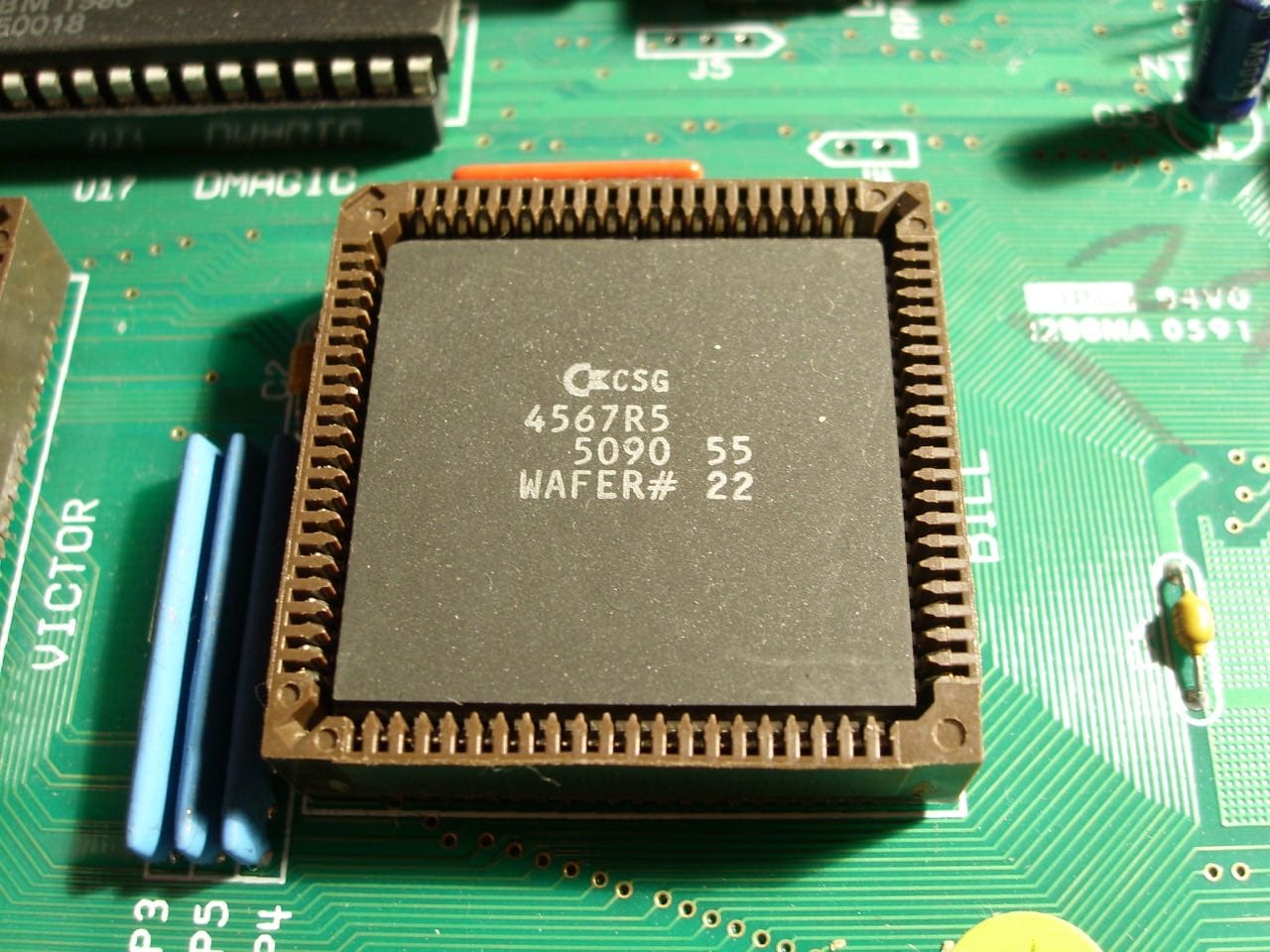
Graphics chip 4567, VIC-III, aka „Bill“
Unlike in the PC, this chip, also known as „Bill“, could be programmed independently of the main processor („Victor“). It could also access the main memory without support. The potential that this chip offered – apart from the specifications on paper – is difficult to estimate, but the programmers would certainly have discovered possibilities that the chip developers would not have thought possible. This is the advantage of standardised hardware, which has always been denied to the PC with its open architecture.
The graphics could be output via the RF output to a normal television, via FBAS to C64-compatible monitors and via an analogue RGB output to Amiga-compatible screens. 80 characters per line were standard in C65 mode and were also important for word processing and spreadsheets at home.
In terms of graphics, the C65 was not inferior to a PC.
Sound:
There’s something to hear left and right – from one (two!) old acquaintances! Commodore soldered two SID-II (SID = Sound Interface Device) onto the 65 board. Unfortunately, these are the worse chips installed in the 8085 version (from the C64 C). These can only play sound samples (short, digital sound recordings), which still worked well in the 6581 due to a serial error in the volume register, very quietly. The 8085 was actually the better 6581, because the analogue components of the 6581 were also digital and therefore offered a clearer sound – each individual 6581 sounded slightly different to its siblings in the analogue filter range. But as with the illegal opcodes that extended the performance of the CPU, these design flaws in the 6581 opened up possibilities that could not be found in the manufacturer’s data sheet.
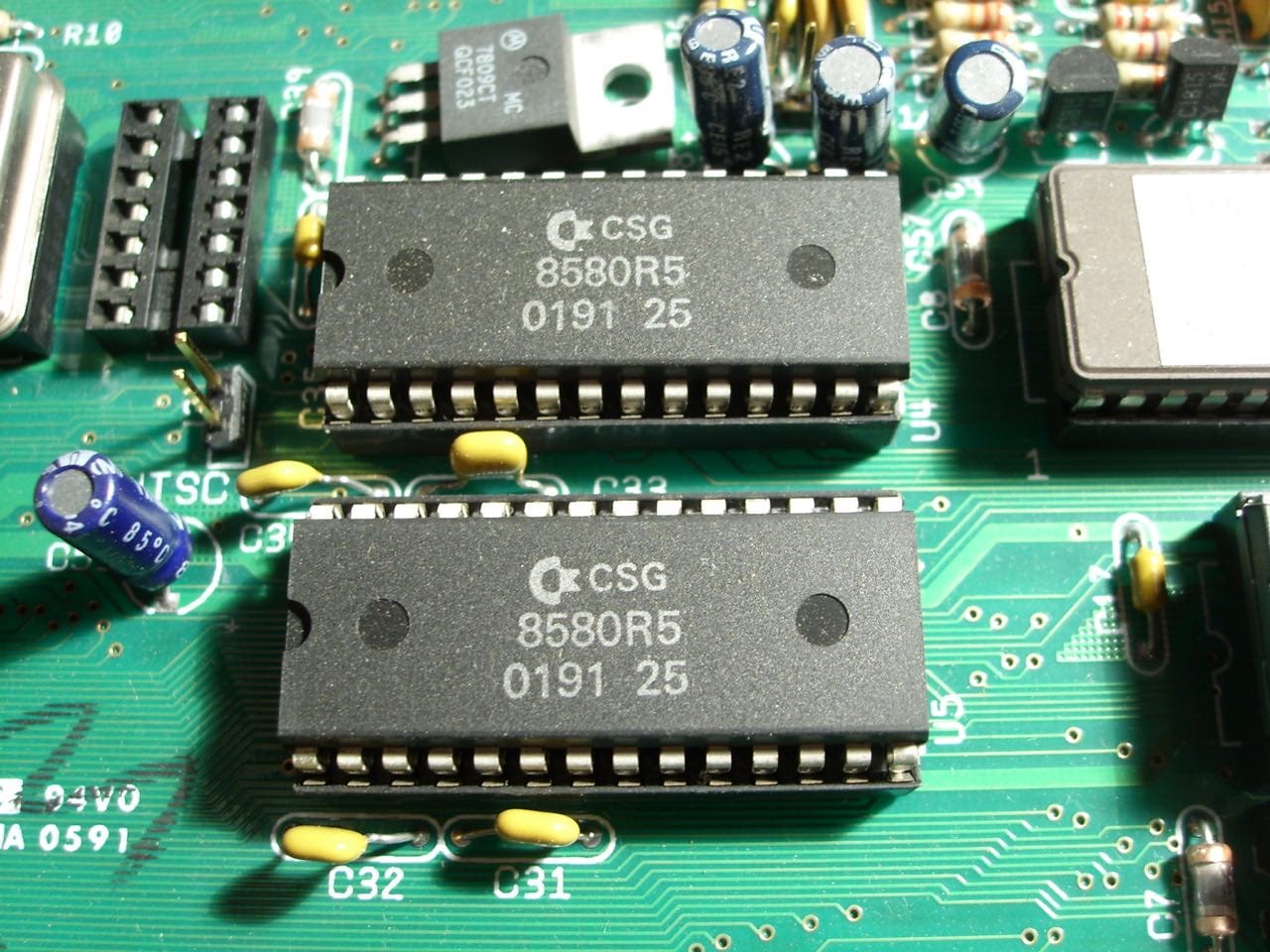
Two sound chips, 8085, aka „SID-II“
Nevertheless, the 8085 with six voices and stereo sound was far superior to any available ISA bus sound card for the PC. The SID sound is quite rightly legendary.
RAM:
Theoretically, up to eight megabytes (8 MB!) of RAM could have been retrofitted. This was more than on a par with the PCs available at the time.
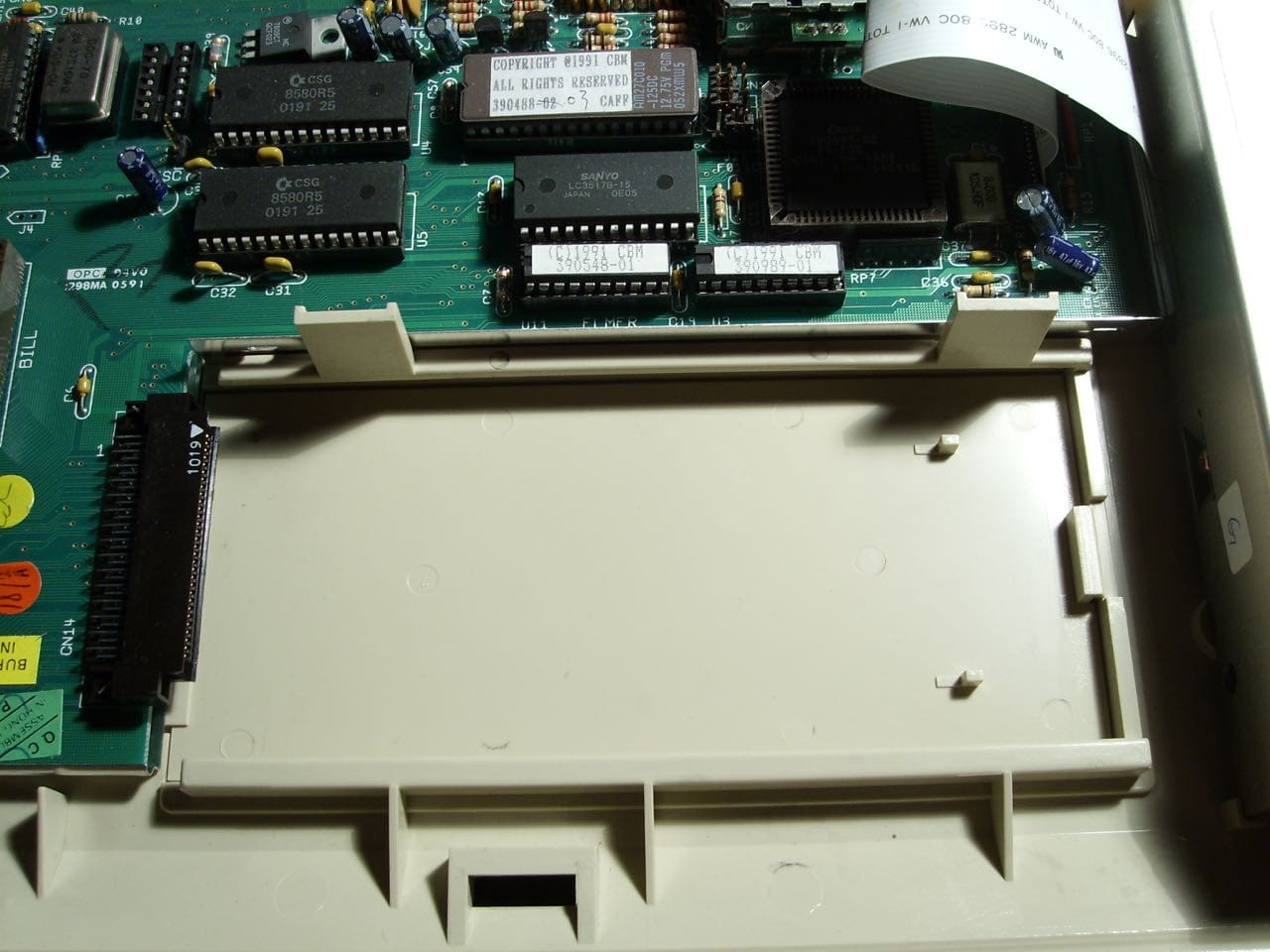
Slot of the RAM expansion
Custom chips:
A DMA controller (DMAgic, 390957) with fast „blitter“ (shifts RAM bit by bit), which takes over RAM management from the CPU. A floppy disc controller („FDC“, 4571/81) with a connected 1565 floppy drive, which offered a full 1 MB memory capacity and was compatible with the 1581.
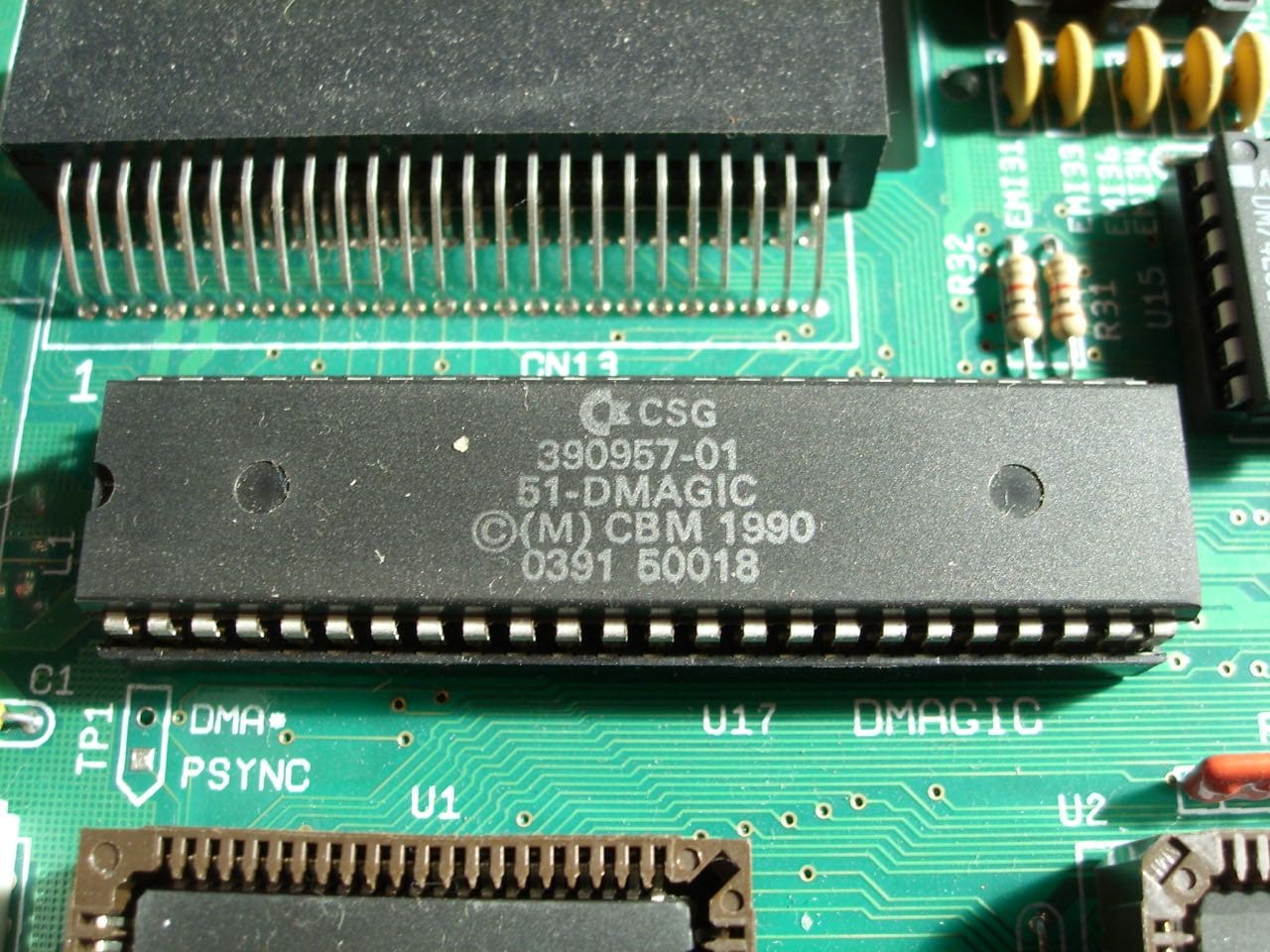
DMAgic“ memory controller
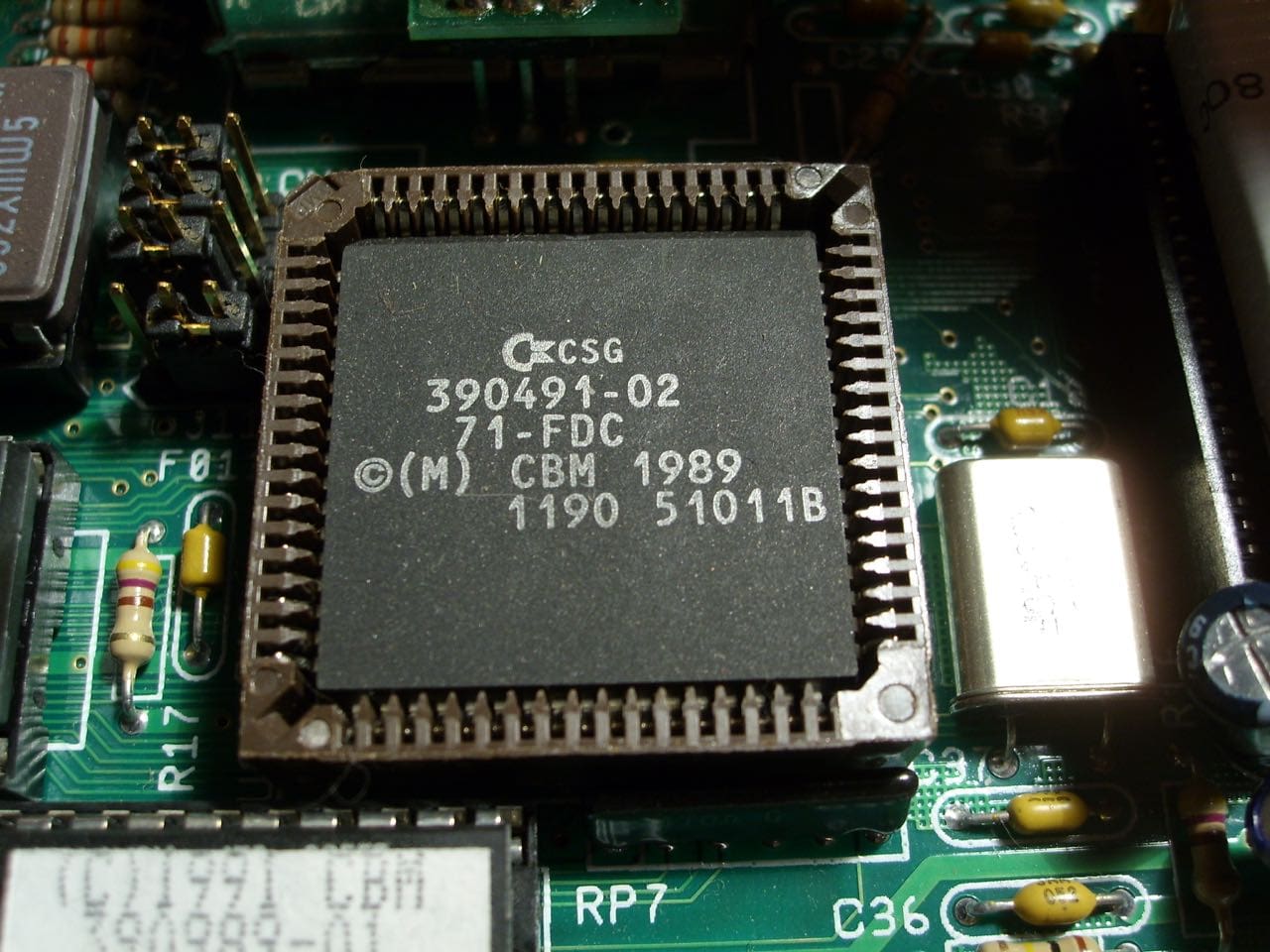
Floppy disc controller
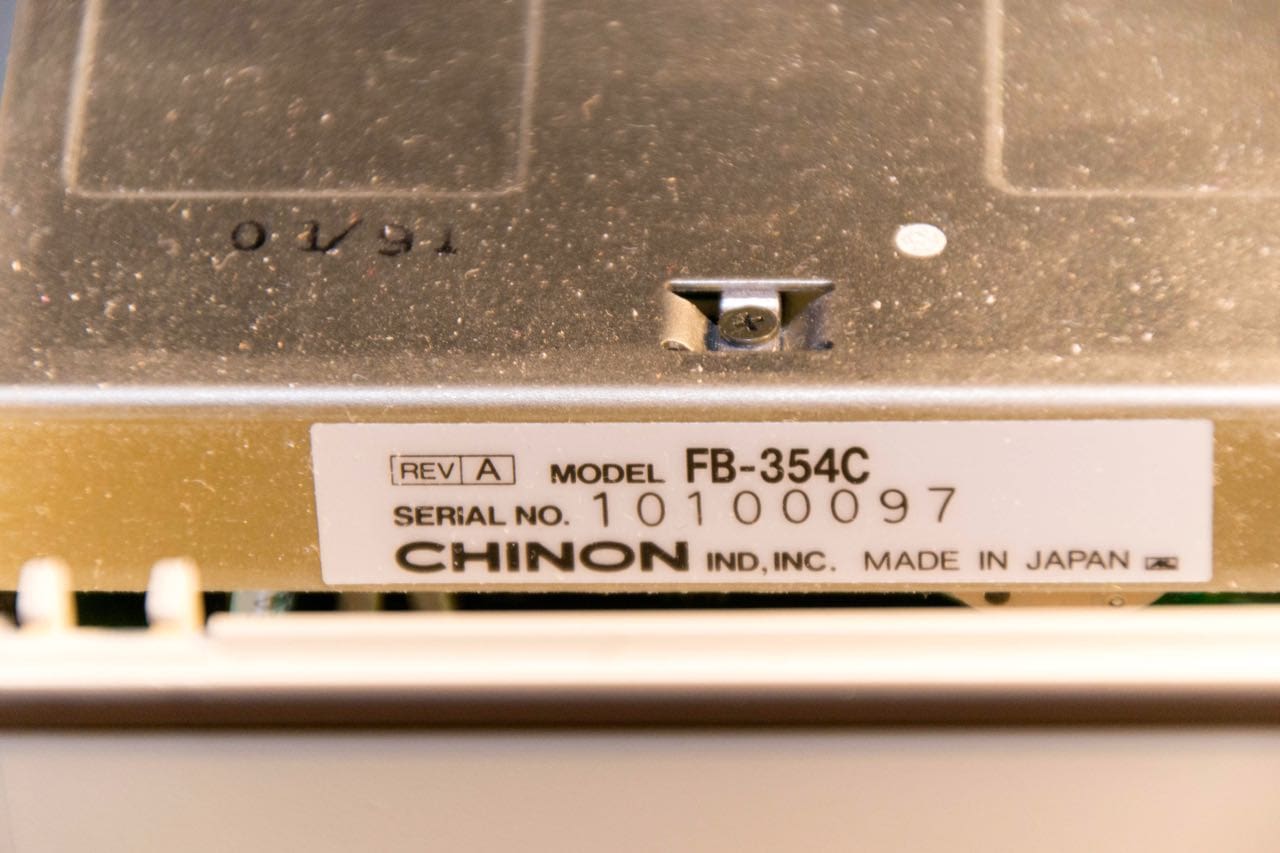
Floppy disc drive, internal
Software:
The BASIC of the C65 mode, which was unfortunately never completed, would probably have been about as powerful as that of the C128. The prototypes also included an assembler monitor.
You could switch back and forth between the C64 and C65 modes. I have already mentioned compatibility in the previous articles.
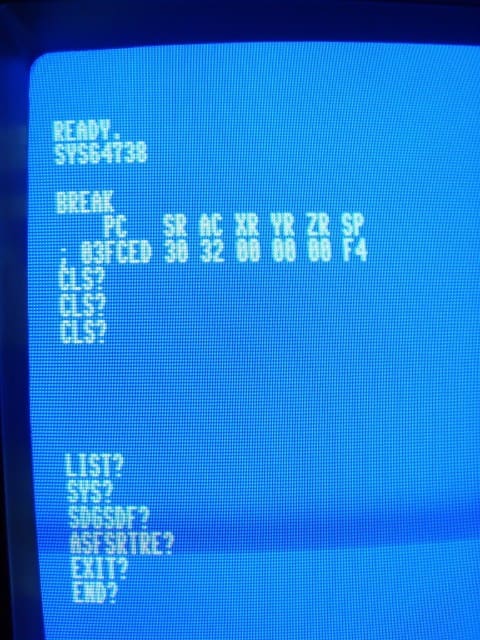
Conclusion:
All in all, I would expect the overall system speed to exceed that of the C64 by a factor of about six to seven (significantly more for RAM operations). It would not have been a competitor to the Amiga or the PC in terms of performance, but it could certainly have kept the C64 fan base loyal to Commodore for a few more years. It would have been comparable to upgrading a modern PC with a new CPU, graphics card, more RAM and a faster SSD – and at a really favourable price. Back then, buying a new home computer usually meant that you could no longer use the software and peripherals. So the C65 would have been a great upgrade option for customers.